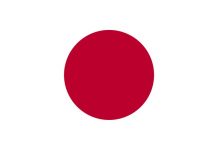| Badik: | A Malayan dagger shaped like a butterfly whose straight blade bears one sharp edge. | |
| Ba Gua Zhang: | Translated as Eight Trigram Palm. One of the three Nei Jia Quan or internal styles of China. The other two styles are Xing Yi Quan and Taiji Quan. The practice of Bagua generates Qi (internal energy) for both health and combat purposes. Baguazhang uses palm techniques exclusively. | |
| Bajutsu: | Japanese art of horsemanship. Also known as jobajutsu. | |
| Bal: | Foot. | |
| Balisong: | A knife produced in the Phillipines. Also known as a “butterfly knife.” | |
| Bandesh: | An ancient form of Indian fighting who principle tenant is to defeat an armed enemy without killing him. | |
| Bando: | A Burmese method of armed and unarmed combat composed of karate-like striking a kicking, judo-like throws, stick fighting, swordplay, and knife and spear fighting. | |
| Banjang: | A West Javanese style of gulat. | |
| Banshay: | A Burmese martial art, influenced by both Chinese and Indian sources, which embraces the use of such weapons as the sword, staff and spear. | |
| Baro: | Korean command meaning to finish and return to starting position. | |
| Basho: | Grand sumo tournaments scheduled six times each year in Japan. | |
| Baston: | A wooden or rattan stick or cane of varying lengths used in the Filipino martial arts. | |
| Bastonero: | Students and practitioners of anis de mano. | |
| Beladau: | A Sumatran curved dagger with a convex cutting edge. | |
| Belt: | Most modern martial arts schools use belts to distinguish rank or level of skill. Traditionally, the darker the belt the higher the rank. | |
| Beng Chuan: | A Chinese term meaning “crushing fist”. It refers to the explosive power cultivated in some Wushu styles. | |
| Bersilat: | A Malaysian martial art embracing both empty-hand and weapons techniques. | |
| Binot: | An ancient Indian form of weaponless fighting the employed wrestling techniques against both armed and unarmed assailants. | |
| Bisento: | A spear-like weapon with a blade resembling a scimitar affixed to its end. This weapon is extremely heavy, and was used to cut through armor and/or to cut down a horse in combat. The bisento was primarily used by the ninja of feudal Japan. | |
| Bo: | A wooden staff approximately six feet long. It is one of the five weapons systematized by the early Okinawan developers of te (hand), and originated with the poles used by farm people to balance heavy loads across the shoulders. | |
| Bogu: | Protective equipment of nonmetallic materials used in several styles of Japanese karate, primarily for competitive sparring. | |
| Bojutsu: | An armed defense system centering around the use of the bo. It was developed from Japanese lance and spear techniques. | |
| Bokken: | A wooden sword used by the Japanese feudal warrior as a practice weapon. The bokken went on to become an effective battlefield weapon. | |
| Bong: | See “bo.” | |
| Bonno | “Disturbed feeling”. Loss of concentration. | |
| Bu: | “Military” or “warrior.” A concept denoting the entire military dimension of feudal Japan. | |
| Buddhism: | A religious doctrine, one branch of which – the Chan school, or Zen – is closely connected to the practice of the martial arts. | |
| Budo: | “Military way” or “way of fighting.” A generic term encompassing all of the Japanese martial arts, which are largely 20th century offspring stemming from concepts that can first be positively identified about the mid-18th century. | |
| Budoka: | Any follower of the budo doctrine belonging to such arts as aikido, judo, kendo and karate. | |
| Bugei: | A generic term encompassing older Japanese martial arts which applies specifically to those principles used by the samurai, or bushi, whose occupation was called bugei. | |
| Bujin: | A name for the martial arts expert. Translated as “military person” or “warrior person.” | |
| Bujutsu: | “Military arts.” A collective term for all the Japanese arts practiced by the samurai. | |
| Buke: | Samurai. Translated as “person or military class.” | |
| Bunkai: | “Analysis.” The detailed study of martial arts techniques by looking at the overall movement and breaking it down into the individual components. Three levels of bunkai are 1) kihon bunkai, the basic movement done by everyone (like kata) 2)oyo bunkai varying the movement for your body size 3)renzoku bunkai is continuous action between two opponents using different techniques like fighting. | |
| Bushi: | “Military person,” “warrior,” or “samurai.” A term for the Japanese warrior which was changed to samurai in the 15th century. | |
| Bushido: | Military-Gentleman Way” bushi (bu military, shi gentleman) and do (way) A method of training designed to enable a person to protect one’s self and others defensively not aggressively. If the mind, body and spirit (sanchin) are trained a person will be in control and fighting will be the least desired option. Bushido is a strict code of ethical behavior followed by the samurai. Bushido was formulated during the Tokugawa Era (1603 – 1868) of Japan. The premise of the code was to advise a samurai how to conduct himself in battle and how to find a meaningful place in a peacetime society. |






